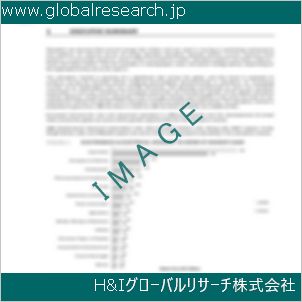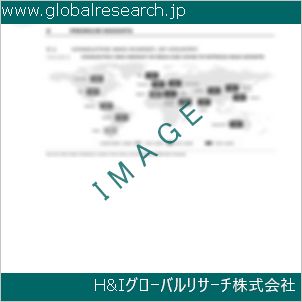Table of Contents
1 Industry Overview of Astaxanthin
1.1 Definition and Specifications of Astaxanthin
1.1.1 Definition of Astaxanthin
1.1.2 Specifications of Astaxanthin
1.2 Classification of Astaxanthin
1.3 Applications of Astaxanthin
1.3.1 Nuclear Application
1.3.2 Non-Nuclear Application
1.4 Industry Chain Structure of Astaxanthin
1.5 Industry Overview and Major Regions Status of Astaxanthin
1.5.1 Industry Overview of Astaxanthin
1.5.2 Global Major Regions Status of Astaxanthin
1.6 Industry Policy Analysis of Astaxanthin
1.7 Industry News Analysis of Astaxanthin
2 Manufacturing Cost Structure Analysis of Astaxanthin
2.1 Raw Material Suppliers and Price Analysis of Astaxanthin
2.2 Equipment Suppliers and Price Analysis of Astaxanthin
2.3 Labor Cost Analysis of Astaxanthin
2.4 Other Costs Analysis of Astaxanthin
2.5 Manufacturing Cost Structure Analysis of Astaxanthin
2.6 Manufacturing Process Analysis of Astaxanthin
3 Technical Data and Manufacturing Plants Analysis of Astaxanthin
3.1 Capacity and Commercial Production Date of Global Astaxanthin Major Manufacturers in 2023
3.2 Manufacturing Plants Distribution of Global Astaxanthin Major Manufacturers in 2023
3.3 R&D Status and Technology Source of Global Astaxanthin Major Manufacturers in 2023
3.4 Raw Materials Sources Analysis of Global Astaxanthin Major Manufacturers in 2023
4 Capacity, Production and Revenue Analysis of Astaxanthin by Regions, Types and Manufacturers
4.1 Global Capacity, Production and Revenue of Astaxanthin by Regions 2019-2024
4.2 Global and Major Regions Capacity, Production, Revenue and Growth Rate of Astaxanthin 2019-2024
4.3 Global Capacity, Production and Revenue of Astaxanthin by Types 2019-2024
4.4 Global Capacity, Production and Revenue of Astaxanthin by Manufacturers 2019-2024
5 Price, Cost, Gross and Gross Margin Analysis of Astaxanthin by Regions, Types and Manufacturers
5.1 Price, Cost, Gross and Gross Margin Analysis of Astaxanthin by Regions 2019-2024
5.2 Price, Cost, Gross and Gross Margin Analysis of Astaxanthin by Types 2019-2024
5.3 Price, Cost, Gross and Gross Margin Analysis of Astaxanthin by Manufacturers 2019-2024
6 Consumption Volume, Consumption Value and Sale Price Analysis of Astaxanthin by Regions, Types and Applications
6.1 Global Consumption Volume and Consumption Value of Astaxanthin by Regions 2019-2024
6.2 Global and Major Regions Consumption Volume, Consumption Value and Growth Rate of Astaxanthin 2019-2024
6.3 Global Consumption Volume and Consumption Value of Astaxanthin by Types 2019-2024
6.4 Global Consumption Volume and Consumption Value of Astaxanthin by Applications 2019-2024
6.5 Sale Price of Astaxanthin by Regions 2019-2024
6.6 Sale Price of Astaxanthin by Types 2019-2024
6.7 Sale Price of Astaxanthin by Applications 2019-2024
6.8 Market Share Analysis of Astaxanthin by Different Sale Price Levels
7 Supply, Import, Export and Consumption Analysis of Astaxanthin
7.1 Supply, Consumption and Gap of Astaxanthin 2019-2024
7.2 Global Capacity, Production, Price, Cost, Revenue, Supply, Import, Export and Consumption of Astaxanthin 2019-2024
7.3 USA Capacity, Production, Price, Cost, Revenue, Supply, Import, Export and Consumption of Astaxanthin 2019-2024
7.4 EU Capacity, Production, Price, Cost, Revenue, Supply, Import, Export and Consumption of Astaxanthin 2019-2024
7.5 China Capacity, Production, Price, Cost, Revenue, Supply, Import, Export and Consumption of Astaxanthin 2019-2024
7.6 Japan Capacity, Production, Price, Cost, Revenue, Supply, Import, Export and Consumption of Astaxanthin 2019-2024
8 Major Manufacturers Analysis of Astaxanthin
8.1 Manufacturer One
8.1.1 Company Profile
8.1.2 Product Picture and Specifications
8.1.2.1 Type I
8.1.2.2 Type II
8.1.2.3 Type III
8.1.3 Capacity, Production, Price, Cost, Gross and Revenue
8.1.4 Contact Information
8.2 Manufacturer Two
8.2.1 Company Profile
8.2.2 Product Picture and Specifications
8.2.2.1 Type I
8.2.2.2 Type II
8.2.2.3 Type III
8.2.3 Capacity, Production, Price, Cost, Gross and Revenue
8.2.4 Contact Information
8.3 Manufacturer Three
8.3.1 Company Profile
8.3.2 Product Picture and Specifications
8.3.2.1 Type I
8.3.2.2 Type II
8.3.2.3 Type III
8.3.3 Capacity, Production, Price, Cost, Gross and Revenue
8.3.4 Contact Information
8.4 Manufacturer Four
8.4.1 Company Profile
8.4.2 Product Picture and Specifications
8.4.2.1 Type I
8.4.2.2 Type II
8.4.2.3 Type III
8.4.3 Capacity, Production, Price, Cost, Gross and Revenue
8.4.4 Contact Information
8.5 Manufacturer Five
8.5.1 Company Profile
8.5.2 Product Picture and Specifications
8.5.2.1 Type I
8.5.2.2 Type II
8.5.2.3 Type III
8.5.3 Capacity, Production, Price, Cost, Gross and Revenue
8.5.4 Contact Information
…
9 Marketing Trader or Distributor Analysis of Astaxanthin
9.1 Marketing Channels Status of Astaxanthin
9.2 Traders or Distributors with Contact Information of Astaxanthin by Regions
9.3 Ex-work Price, Channel Price and End Buyer Price Analysis of Astaxanthin
9.4 Regional Import, Export and Trade Analysis of Astaxanthin
10 Industry Chain Analysis of Astaxanthin
10.1 Upstream Major Raw Materials Suppliers Analysis of Astaxanthin
10.1.1 Major Raw Materials Suppliers with Contact Information Analysis of Astaxanthin
10.1.2 Major Raw Materials Suppliers with Supply Volume Analysis of Astaxanthin by Regions
10.2 Upstream Major Equipment Suppliers Analysis of Astaxanthin
10.2.1 Major Equipment Suppliers with Contact Information Analysis of Astaxanthin
10.2.2 Major Equipment Suppliers with Product Pictures Analysis of Astaxanthin by Regions
10.3 Downstream Major Consumers Analysis of Astaxanthin
10.3.1 Major Consumers with Contact Information Analysis of Astaxanthin
10.3.2 Major Consumers with Consumption Volume Analysis of Astaxanthin by Regions
10.4 Supply Chain Relationship Analysis of Astaxanthin
11 Development Trend of Analysis of Astaxanthin
11.1 Capacity, Production and Revenue Forecast of Astaxanthin by Regions and Types
11.1.1 Global Capacity, Production and Revenue of Astaxanthin by Regions 2024-2029
11.1.2 Global and Major Regions Capacity, Production, Revenue and Growth Rate of Astaxanthin 2024-2029
11.1.3 Global Capacity, Production and Revenue of Astaxanthin by Types 2024-2029
11.2 Consumption Volume and Consumption Value Forecast of Astaxanthin by Regions, Types and Applications
11.2.1 Global Consumption Volume and Consumption Value of Astaxanthin by Regions 2024-2029
11.2.2 Global and Major Regions Consumption Volume, Consumption Value and Growth Rate of Astaxanthin 2024-2029
11.2.3 Global Consumption Volume and Consumption Value of Astaxanthin by Types 2024-2029
11.2.4 Global Consumption Volume and Consumption Value of Astaxanthin by Applications 2024-2029
11.3 Supply, Import, Export and Consumption Forecast of Astaxanthin
11.3.1 Supply, Consumption and Gap of Astaxanthin 2024-2029
11.3.2 Global Capacity, Production, Price, Cost, Revenue, Supply, Import, Export and Consumption of Astaxanthin 2024-2029
11.3.3 USA Capacity, Production, Price, Cost, Revenue, Supply, Import, Export and Consumption of Astaxanthin 2024-2029
11.3.4 EU Capacity, Production, Price, Cost, Revenue, Supply, Import, Export and Consumption of Astaxanthin 2024-2029
11.3.5 China Capacity, Production, Price, Cost, Revenue, Supply, Import, Export and Consumption of Astaxanthin 2024-2029
11.3.6 Japan Capacity, Production, Price, Cost, Revenue, Supply, Import, Export and Consumption of Astaxanthin 2024-2029
12 New Project Investment Feasibility Analysis of Astaxanthin
12.1 New Project SWOT Analysis of Astaxanthin
12.2 New Project Investment Feasibility Analysis of Astaxanthin
13 Conclusion of the Global Astaxanthin (CAS 472-61-7) Industry 2024 Market Research Report
| ※参考情報 アスタキサンチンは、カロテノイドの一種であり、主に海洋生物に由来する天然の色素です。化学的には、CAS番号472-61-7で識別されるこの化合物は、主にサーモンやエビ、カニなどの鮮やかな色を引き立てる要素として知られています。アスタキサンチンは赤色からオレンジ色の色素を持ち、光合成や細胞内の酸化ストレスから生物を保護する役割を果たします。 アスタキサンチンの特徴の一つは、その強力な抗酸化作用です。従来のビタミンCやビタミンEと比較しても、抗酸化能力が非常に高いとされ、フリーラジカルを中和するために多くの研究が行われています。これにより、老化防止や生活習慣病の予防に対する期待が寄せられています。特に、皮膚の健康、目の疲労軽減、免疫力の向上といった効果が期待され、サプリメントや化粧品に広く使用されています。 アスタキサンチンは、植物性と動物性の二つの主要な供給源があります。植物性のものは、アスタキサンチンを生産する藻類、特にヘマトコッカス・プルビアリス(Haematococcus pluvialis)から得られます。この藻類は特に光合成に強い環境下で育成され、ストレス条件下でアスタキサンチンを大量に生産します。また、動物性の供給源としては、魚類や甲殻類があり、これらの生物が食物連鎖を通じてアスタキサンチンを体内に取り込むことで、その鮮やかな色を得ています。 アスタキサンチンの用途は非常に多岐にわたります。食品業界では、特に健康補助食品としての利用が進んでおり、サプリメントとして摂取されることが一般的です。また、抗酸化作用により、肌の美しさを追求する化粧品の成分としても重宝されており、皮膚の保護やエイジングケアなどに活用されています。さらに、飼料業界でも、魚類やアクアリウム用の餌に添加され、色揚げ効果が期待されることから、商業目的での利用が進んでいます。 最近では、アスタキサンチンを用いた様々な関連技術も開発されています。例えば、ナノテクノロジーを用いてアスタキサンチンをナノ粒子化することで、より効率的に体内に吸収させる技術が検討されています。また、機能性食品や化粧品への応用を目指した研究も進行中で、アスタキサンチンを含む新しい製品の開発が期待されています。 最後に、アスタキサンチンはその天然由来の特性から、持続可能な生産方法を通じて環境への影響を最小限に抑える形での利用が可能です。藻類の栽培は、農業とは異なり水を必要とするものの、陸地を大きく占有することなく生産ができ、環境への負荷が少ないとされています。これは、これからの時代における食品や化粧品、健康産業において重要な要素となるでしょう。 アスタキサンチンは、今後もより多くの分野での応用が期待されている注目の成分であり、そのポテンシャルはますます広がっています。健康や美容、さらには環境意識の高まりに伴い、アスタキサンチンの需要は増加することが予想され、研究と開発が進むことで、さらなる知見が得られることを期待しています。 |
❖ 免責事項 ❖
http://www.globalresearch.jp/disclaimer












